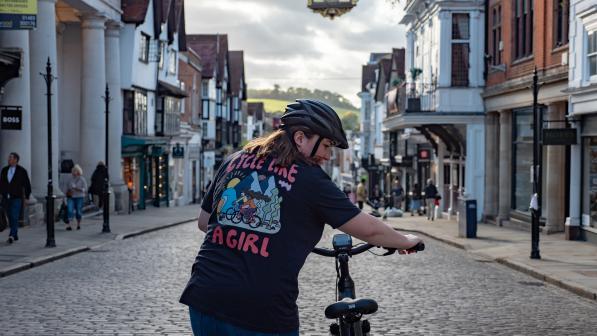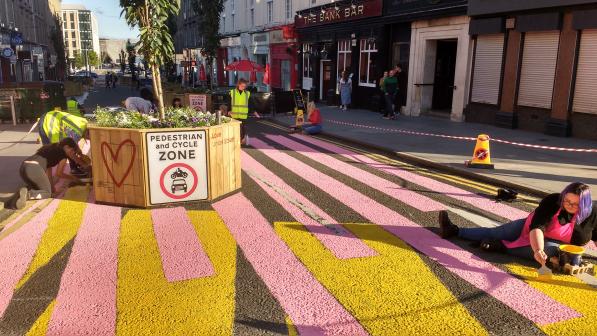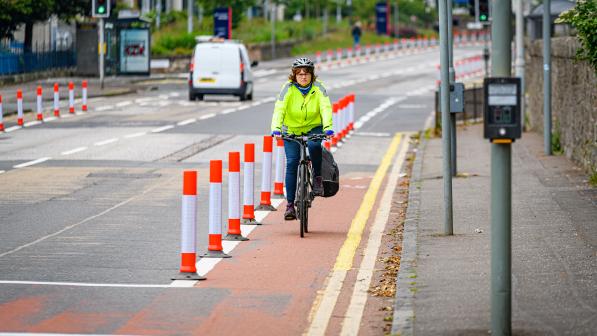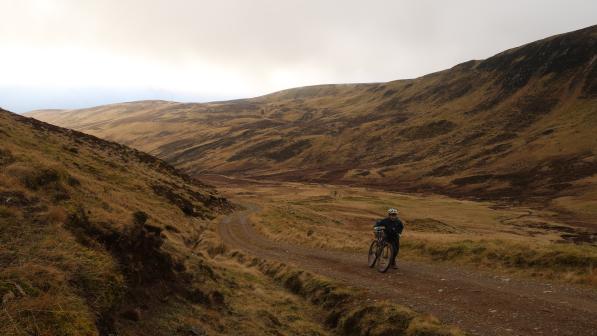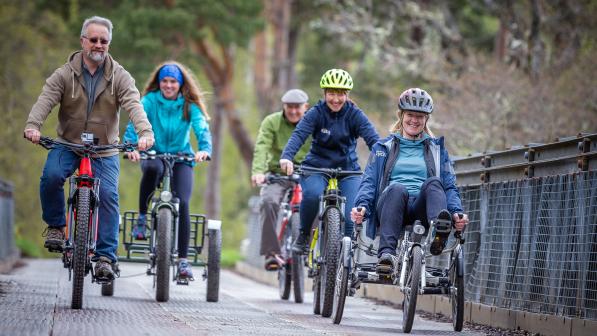Ten ways to create a ten minute town

Love it or loathe it, local has been the only option for most of the world in recent months. I’ve taken my time to love where I live, but lockdown has highlighted the pleasures (and privilege) of calling Dunbar in East Lothian home, where a 10 minute cycle can take you through town to woodlands and beaches against the backdrop of an ever changing seascape.

‘Community’ is a quicksilver and contested concept, but it felt palpable this spring as local volunteers put notes through doors to find who needed assistance and our local school parent council swung into action to ensure every child had a laptop for distance learning. The essential shops stepped up and provided vital provisions in the safest way that they could; our small community-owned grocery swiftly moved to a delivery-only service to prioritise the shielding community and the local supermarket staff worked round the clock to restock, providing a friendly smile at the same time.
We’re all adjusting to a new normal for the long haul now; where our commuter train services are relatively deserted, many of us don’t know when we’ll see the inside of an office or meeting room again and most of us don’t want to return to office working full time anyway. Coronavirus isn’t the only change agent around either; climate change hasn’t gone away and we’re looking straight into recession. It’s more evident than ever that we need a more radical change to the way we live now and into the future, providing an equitable quality of life for all over unsustainable rises in standard of living for the few.
The rise in homeworking and reluctance to restart expensive and soul-destroying commutes are perhaps why the 15 minute city and the 20 minute neighbourhood have started to gain attention beyond the usual suspects. If exchanging a long drive for a short walk to work has the same impact as a raise of 40% or falling in love, it’s possible that working where you live will make us all happier, as well addressing climate chaos and air pollution.
We need to recreate our town centres as places that create space to linger, where walking, wheeling and cycling are the natural, safe and convenient choice for most
Most of us in Scotland live in a town, or something that looks like one: 90% of Scots live in settlements of more than 500 people, although they cover just 2% of our land area, and around 4.5m of us live in settlements of over 3000. Even our cities are more like collections of towns, with clustered services and a clear identity that defines them from the wider anonymity of a city.
Our decision to live in a small town was driven by marital compromise and economic reality, with my husband needing a substantial garden to call his own and my shuddering at the thought of being too far from my beloved Edinburgh. We live on the High Street, where you can find a butcher, baker and candlesticks (if not their maker); a greengrocer; a Co-op; two pharmacies; a sports shop; fishmonger; two charity shops; numerous cafes; gift shops; two galleries; a fancy beer shop and a (peculiarly high) level of hairdressing and beauty establishments. The bike shop is round the corner, we have primary and secondary schools and a three-practice GP centre and a train station.
All of the 9000 or so residents of our former royal burgh are within a 10 minute cycle ride of these services, and yet the High Street looks like a car park and our streets crawl with vehicles.

Our High Street has a lovely ice-cream shop, but you’ll get a taste of petrol with your chosen flavour if you stand outside on the street for long. What could turn High Streets like mine from transport corridors where cars loiter to places that people want to linger?

Spending so much time in the same few square miles has sharpened my focus on what I love about my town, but also on what I’d like to be different as we loosen lockdown and look to revitalise civic and social life, revive the economy and establish longer-term working patterns that protect people and planet.
We need to recreate (and re-engineer) our town centres as places that care for people, that create space to linger, providing sustainable services that don’t cost the earth – and where walking, wheeling and cycling are the natural, safe and convenient choice for most, not just because of a public health crisis keeping cars off the road.

What could be done to improve local town centres in Scotland?
In Scotland, the Town Centre Action Plan Review call for evidence might have slipped under the radar for active travel campaigners, as Spaces for People and related consultations have drawn most of the attention. Despite some years as a cycle campaigner, I confess I’m a complete stranger to the Town Centre Action Plan. Having found it I wondered if the Town Centre First Principle guidance letter got lost somewhere on the way to East Lothian because all I can see springing up is out-of-town development.
Question 8 in the public survey asks ‘What could be done to improve local town centres in Scotland?’ and this will be my response – my Ten Tenets for a Ten Minute Town:
1. Pedestrianisation – it creates the space needed for people to distance and provides an experience that encourages lingering: business owners consistently overestimate how much trade comes from people in cars but you can’t argue with this.
2. Reprioritise private car parking spaces – for car share vehicles, taxis and disabled drivers that need that access protected. On-street, secure cycle storage for town centre flat dwellers and short-term cycle parking for shoppers and visitors.
3. Reallocate road space – to accommodate networks of separate and protected space for walking, wheeling and cycling, keeping everyone safe in their space at the pace that works for their needs.
4. Designate on and off street loading bays and a significant investment in wheeled trolleys and the time to use them – to reverse the delivery driver priorities that create pavement, cycle path and double parking and the excuses that go with them
5. Create happy homeworker services – even if we are allowed to go back into offices, it seems that most of us would just rather not do it. Invest in co-working and meeting spaces, provide high quality digital connections and be prepared for people wanting to spend time and money in the community that they live in if you create the right environment.
6. Nurture a local wellbeing economy with the places and space we have available in our towns. Incentivise the green, healthy and fair so that: our small cycle shops can flourish with confidence and local food growers can provide quality produce on an affordable budget. There should be a shift to repair and reuse (and not reorder) when the means to do so are on the doorstep and available to everyone.
7. Repurpose empty shops into integrated logistics hubs where cargo bike deliveries can take the strain for those that want their High Street shopping delivered to their doors – it will reduce car journeys and associated pollution and congestion and protect those that need to stay at home.
8. Create attractive and accessible places and spaces that don’t require a financial transaction to use them – benches, pocket parks, play space – so sticky streets aren’t just for those that can afford to sit down but for everyone.
9. Develop accessible transport hubs that will loan you a bike, non-standard cycle or mobility scooter to suit your individual needs, provide a helping hand to get onto a train or bus without pre-booking and serve as a point for local leisure and tourism information.
10. Join up your policy and implement it – Town Centre transport measures need to be in tandem with housing development, which is currently in-built with car ownership as standard, so that you can walk, wheel and cycle from your doorstep into the new and more sustainable normal. Build nothing that looks like this:

The Town Centre Review call for evidence is now closed but the public survey is open until 30 September. As the musicians Moloko said so emphatically ‘the time is now’ – get responding and tell the review group that the future of Scotland’s town centres shouldn’t be motorised.
This article was originally published on Suzanne’s personal blog, Back On My Bike.
